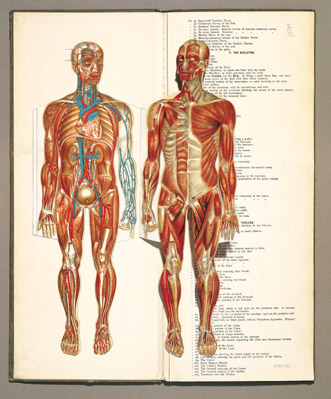William S. Furneaux, ed. Dr. Minder’s Anatomical Manikin of the Human Body. Students ed. rev. by Ethel Mayer. New York: American Thermo-Ware [circa1902].
 |
Classified
Knowledge Captions are drawn from exhibition descriptions by Naomi Hume, a graduate student in art history. |
 |
|
||||